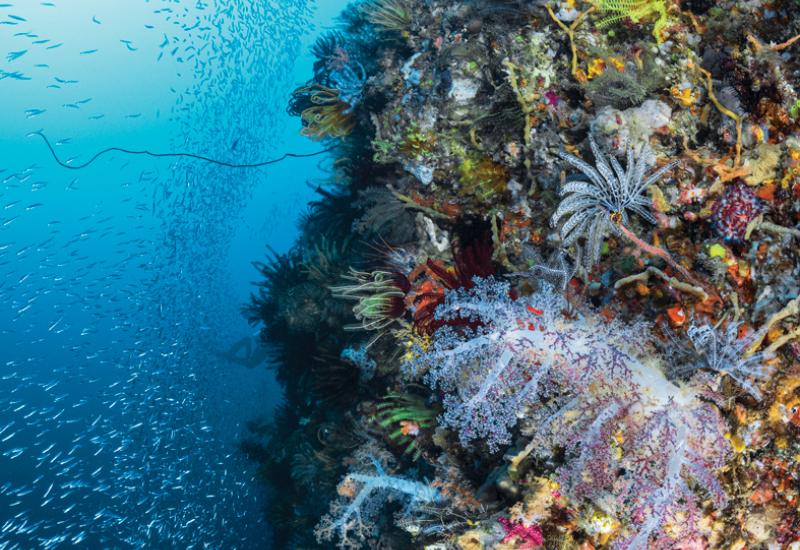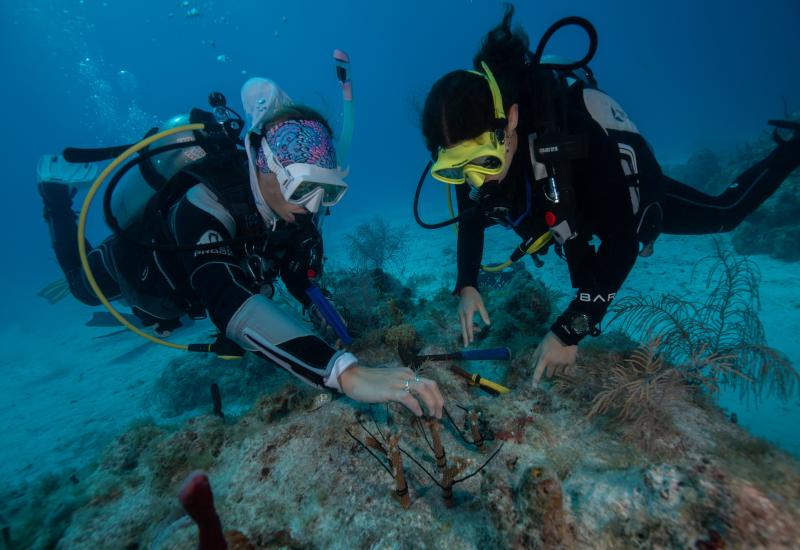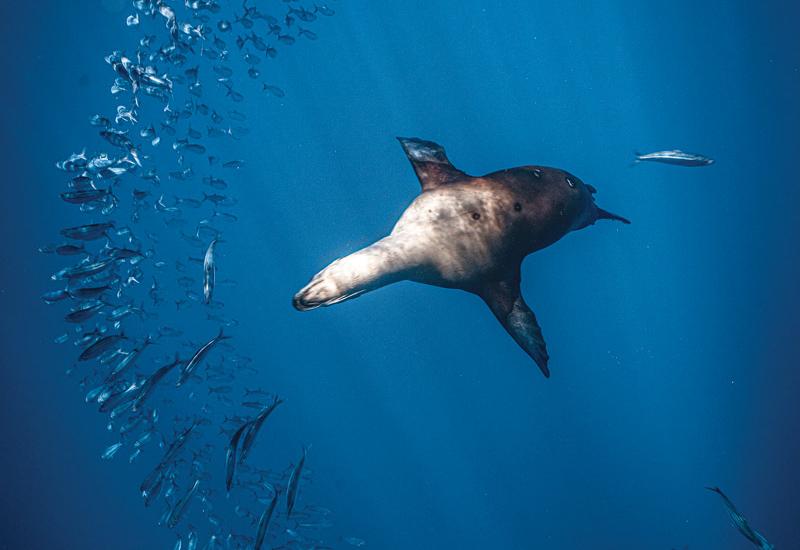Teaching Digital

By Stephen Frink
As an underwater photographer I have especially come to appreciate that the fish are far more accessible here. It doesn't take much time in the water to notice whether you are diving in a SPA or an area where spearfishing is allowed. Along the unprotected reef the stupid groupers and snapper were speared and fished to oblivion long ago, leaving only the clever and elusive to populate the reef structure. My anthropomorphological view is that within the SPA divers are not viewed as a means to extermination but rather a benign, albeit somewhat annoying, presence. This is the very reason I teach underwater photo classes here each summer--there is just so much to photograph, whether the objective is wide-angle, fish or macro subjects. This is where so much of my "Caribbean fish" portfolio was captured, more often than not, within one of the 18 SPAs located offshore of the Florida Keys. After all, it is much more productive to photograph a Nassau grouper swimming blissfully within a foot of my dome port than it is to try to outsmart one fleeing in mad panic because of DNA-ensconced memory equating divers with filets on the grill.
For two and a half decades I've been teaching underwater photography in my hometown of Key Largo. As recently as 2004 my students were still shooting film, but lately the classes have been 100 percent digital, and I've seen a significant improvement in the quickness of learning by students as a result.
The switch from film to digital significantly changes the way I teach. For one thing, workflow is a major component of education from the first day, because if students can't quickly get the images from their cameras to computer, and then converted quickly to JPG so we can do our daily critique session, the task load is far too heavy. So we use Photo Mechanic as our preferred browser to power efficiently through the first edit, and then use the Photoshop CS2 Image Processor to quickly resize to 1280-pixel JPGs for projection.
In the old days I had staff working overtime, nights and weekends, to process E-6 slide film and have it mounted in time for the class. Now, students return to the classroom after the morning dive, and by 3:30 that afternoon we can view the edited results of our Key Largo dives. We even have a Photoshop expert, Daniel Brown, on hand to give evening sessions of Photoshop skills specific to underwater imaging. Still, as heavy as computer skills have come to be, it is still about the art of underwater photography and the adventure of diving.
We go to the very best sites for whatever topic we happen to be shooting, aboard a private dive boat dedicated to our task. I only do these in the summer when the water is warm and clear (I'm no masochist ... I live here and can pick my good days), and because Key Largo has such a strong heritage of marine conservation, there are massive fish populations to photograph, as well as a great portfolio of historic shipwrecks, like the Spiegel Grove and Duane that were sunk as dive attractions.
By the time we wrap the Photoshop seminars at night, we are putting in 14-hour days between the diving and the classroom. But no one's complaining, least of all me.
For more information on Stephen Frink's underwater photography classes, go to http://www.waterhousetours.com/instruction

As an underwater photographer I have especially come to appreciate that the fish are far more accessible here. It doesn't take much time in the water to notice whether you are diving in a SPA or an area where spearfishing is allowed. Along the unprotected reef the stupid groupers and snapper were speared and fished to oblivion long ago, leaving only the clever and elusive to populate the reef structure. My anthropomorphological view is that within the SPA divers are not viewed as a means to extermination but rather a benign, albeit somewhat annoying, presence. This is the very reason I teach underwater photo classes here each summer--there is just so much to photograph, whether the objective is wide-angle, fish or macro subjects. This is where so much of my "Caribbean fish" portfolio was captured, more often than not, within one of the 18 SPAs located offshore of the Florida Keys. After all, it is much more productive to photograph a Nassau grouper swimming blissfully within a foot of my dome port than it is to try to outsmart one fleeing in mad panic because of DNA-ensconced memory equating divers with filets on the grill.

For two and a half decades I've been teaching underwater photography in my hometown of Key Largo. As recently as 2004 my students were still shooting film, but lately the classes have been 100 percent digital, and I've seen a significant improvement in the quickness of learning by students as a result.
The switch from film to digital significantly changes the way I teach. For one thing, workflow is a major component of education from the first day, because if students can't quickly get the images from their cameras to computer, and then converted quickly to JPG so we can do our daily critique session, the task load is far too heavy. So we use Photo Mechanic as our preferred browser to power efficiently through the first edit, and then use the Photoshop CS2 Image Processor to quickly resize to 1280-pixel JPGs for projection.

In the old days I had staff working overtime, nights and weekends, to process E-6 slide film and have it mounted in time for the class. Now, students return to the classroom after the morning dive, and by 3:30 that afternoon we can view the edited results of our Key Largo dives. We even have a Photoshop expert, Daniel Brown, on hand to give evening sessions of Photoshop skills specific to underwater imaging. Still, as heavy as computer skills have come to be, it is still about the art of underwater photography and the adventure of diving.

We go to the very best sites for whatever topic we happen to be shooting, aboard a private dive boat dedicated to our task. I only do these in the summer when the water is warm and clear (I'm no masochist ... I live here and can pick my good days), and because Key Largo has such a strong heritage of marine conservation, there are massive fish populations to photograph, as well as a great portfolio of historic shipwrecks, like the Spiegel Grove and Duane that were sunk as dive attractions.
By the time we wrap the Photoshop seminars at night, we are putting in 14-hour days between the diving and the classroom. But no one's complaining, least of all me.
For more information on Stephen Frink's underwater photography classes, go to http://www.waterhousetours.com/instruction










